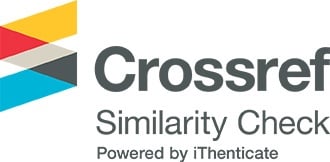New evidence between cost of debt and information disclosure level
Các tác giả
DOI: https://doi.org/10.59294/HIUJS2025033Từ khóa:
cost of debt, information disclosure level, z-score indicatorTóm tắt
This study examines the factors that influence the cost of debt (CoD) among companies listed on the Vietnamese stock market, with a particular focus on the level of information disclosure and financial distress prediction indicators. The samples consist of companies included in the VN100 index, which represents the top 100 largest and most liquid stocks in Vietnam. Data was collected from audited financial statements and annual reports published between 2019 and 2023. The study employs multiple regression analysis to explore the relationship between CoD and various explanatory variables, including firm-specific characteristics (such as firm size, profitability, and governance structures), financial distress indicators (e.g Altman z-score), and the level of information disclosure. The findings indicate a statistically significant correlation between the level of information disclosure, financial distress prediction indicators, and the CoD. Specifically, the results reveal that companies with higher levels of information disclosure tend to face higher debt costs. The counterintuitive outcome suggests that firms may disclosure more detailed information when they are under financial stress or attempting to signal transparency to mitigate lender concerns, which in turn may rise the perceived risk among creditors.
Abstract
This study examines the factors that influence the cost of debt (CoD) among companies listed on the Vietnamese stock market, with a particular focus on the level of information disclosure and financial distress prediction indicators. The samples consist of companies included in the VN100 index, which represents the top 100 largest and most liquid stocks in Vietnam. Data was collected from audited financial statements and annual reports published between 2019 and 2023. The study employs multiple regression analysis to explore the relationship between CoD and various explanatory variables, including firm-specific characteristics (such as firm size, profitability, and governance structures), financial distress indicators (e.g Altman z-score), and the level of information disclosure. The findings indicate a statistically significant correlation between the level of information disclosure, financial distress prediction indicators, and the CoD. Specifically, the results reveal that companies with higher levels of information disclosure tend to face higher debt costs. The counterintuitive outcome suggests that firms may disclosure more detailed information when they are under financial stress or attempting to signal transparency to mitigate lender concerns, which in turn may rise the perceived risk among creditors.
Tài liệu tham khảo
[1] S. C. Myers, “Determinants of corporate borrowing,” J. Financ. Econ., vol. 5, no. 2, pp. 147-175, 1977, doi: 10.1016/0304-405X(77)90015-0.
DOI: https://doi.org/10.1016/0304-405X(77)90015-0[2] P. Sengupta, “Corporate disclosure quality and the cost of debt,” Account. Rev., vol. 73, no. 4, pp. 459-474, 1998.
[3] R. E. Freeman, Strategic management: A stakeholder approach. Cambridge University Press, 1984.
[4] M. Fonseka, T. Rajapakse, and G. Richardson, “The effect of environmental information disclosure and energy product type on the cost of debt: Evidence from energy firms in China,” Pac.-Basin Finance J., vol. 54, pp. 159-182, 2019, doi: 10.1016/j.pacfin.2018.05.001.
DOI: https://doi.org/10.1016/j.pacfin.2018.05.001[5] E. I. Altman and E. Hotchkiss, Corporate financial distress and bankruptcy: Predict and avoid bankruptcy, analyze and invest in distressed debt, vol. 289. John Wiley & Sons, 2010.
[6] P. M. Healy and K. G. Palepu, “Information asymmetry, corporate disclosure, and the capital markets: A review of the empirical disclosure literature,” J. Account. Econ., vol. 31, no. 1-3, pp. 405-440, 2001, doi: 10.1016/S0165-4101(01)00018-0.
DOI: https://doi.org/10.1016/S0165-4101(01)00018-0[7] A. R. Cerf, “Corporate reporting and investment decisions,” Public Account. Res. Program, 1961.
[8] C. Chen and S. Zhu, “Financial reporting quality, debt maturity, and the cost of debt: Evidence from China,” Emerg. Mark. Finance Trade, vol. 49, pp. 236-253, 2013, doi: 10.2753/REE1540-496X4905S416.
DOI: https://doi.org/10.2753/REE1540-496X4905S416[9] E. F. Fama and K. R. French, “Testing trade-off and pecking order predictions about dividends and debt,” Rev. Financ. Stud., vol. 15, no. 1, pp. 1-33, 2002.
DOI: https://doi.org/10.1093/rfs/15.1.1[10] M. Spence, “Job market signaling,” in Uncertainty in Economics, Elsevier, 1978, pp. 281-306.
DOI: https://doi.org/10.1016/B978-0-12-214850-7.50025-5[11] F. Modigliani and M. H. Miller, “Corporate income taxes and the cost of capital: A correction,” Am. Econ. Rev., vol. 53, no. 3, pp. 433-443, 1963.
[12] M. C. Jensen, “Agency costs of free cash flow, corporate finance, and takeovers,” Am. Econ. Rev., vol. 76, no. 2, pp. 323-329, 1986.
[13] S. C. Myers and N. S. Majluf, “Corporate financing and investment decisions when firms have information that investors do not have,” J. Financ. Econ., vol. 13, no. 2, pp. 187-221, 1984, doi: 10.1016/0304-405X(84)90023-0.
DOI: https://doi.org/10.1016/0304-405X(84)90023-0[14] A. Beyer and R. A. Dye, “Debt and voluntary disclosure,” Account. Rev., vol. 96, no. 4, pp. 111-130, 2021, doi: 10.2308/TAR-2018-0631.
DOI: https://doi.org/10.2308/TAR-2018-0631[15] M. A. Alhady, “Effect of good corporate governance, company size, and voluntary disclosure on cost of debt in healthcare companies listed on the Indonesia stock exchange (Period 2017-2021),” presented at the IOP Conference Series: Earth and Environmental Science, IOP Publishing, 2023, p. 012030. doi: 10.1088/1755-1315/1188/1/012030.
DOI: https://doi.org/10.1088/1755-1315/1188/1/012030[16] Y. Yang, J. Wen, and Y. Li, “The impact of environmental information disclosure on the cost of debt: Evidence from China,” J. Appl. Econ., vol. 27, no. 1, p. 2301280, 2024, doi: 10.1080/15140326.2023.2301280.
[17] S. Nandi and S. Ghosh, “Corporate governance attributes, firm charact eristics and the level of corporate disclosure: Evidence from the Indian listed firms,” Decis. Sci. Lett., vol. 2, no. 1, pp. 45-58, 2012, doi: 10.5267/j.dsl.2012.10.004.
DOI: https://doi.org/10.5267/j.dsl.2012.10.004[18] M. Saputra and M. Faizal, “The influence of corporate governance perception index, managerial ownership, government ownership and sales growth on cost of debt,” J. Res. Bus. Econ. Manag., vol. 6, no. 2, pp. 846-857, 2016.
[19] B. G. Tabachnick and L. S. Fidell, Experimental designs using ANOVA, vol. 724. Thomson/Brooks/Cole Belmont, CA, 2007.
[20] D. Roodman, “How to do xtabond2: An introduction to difference and system GMM in Stata,” Stata J., vol. 9, no. 1, pp. 86-136, 2009, doi: 10.1177/1536867X0900900106.
DOI: https://doi.org/10.1177/1536867X0900900106Tải xuống
Tải xuống: 72











